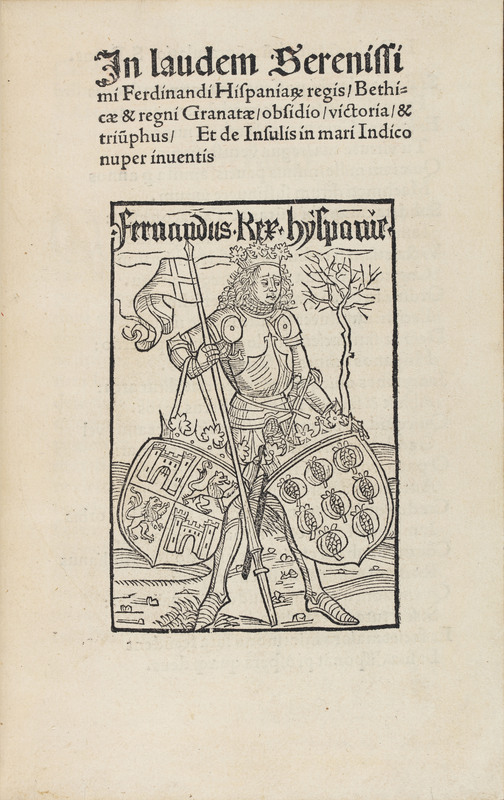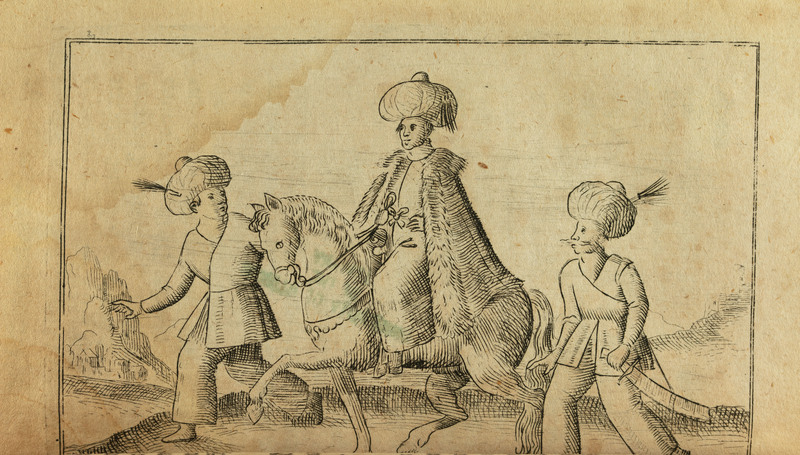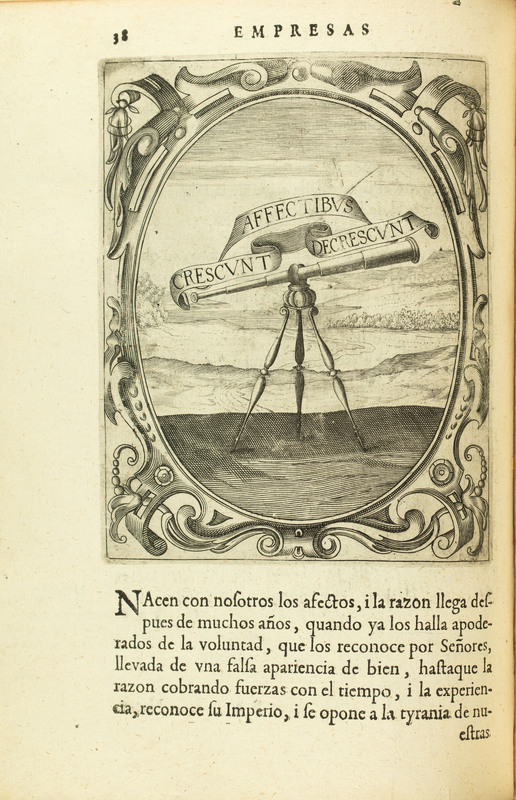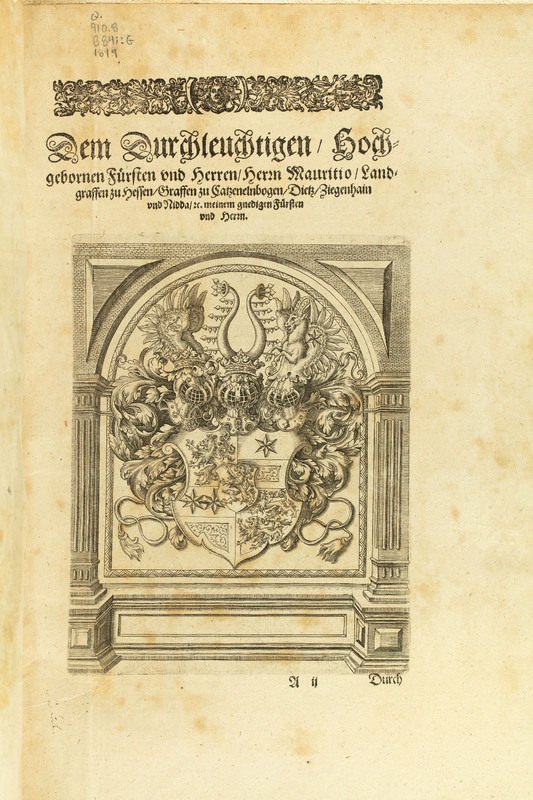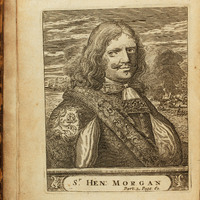Exploration and Risk
Exploration, conquest, and commerce are privileged fields for gauging risks in the early modern period. As large territories are being integrated into new political and global economic systems, travelers, historians, and cartographers inform entrepreneurs and rulers on how to gauge economic potentialities and risks. Inversely, the initiative for exploration and the production of knowledge about discoveries is informed in most cases by private investment and potential profitability.
Works Included
This incunabulum contains the text De insulis nuper in Mari lndico repertis, Leandro
di Cosco's Latin translation of Columbus's letter to Luis de Sántngel, bound with the
historical drama in Latin prose by Carlo Verardi (1440-1500) about Ferdinand's 1492
capture of Granada. This edition of the De insulis, like the one printed in Basel the
previous year, contains five woodcuts purporting to be the earliest pictures of the New
World. The moment of the encounter represented here portrays at the same time the
potential for gain and the threat of the radically alien.
This is one of the most influential translations of Marco Polo's Travels into German, by
Hieronymus Megiser (ca. 1554-1618), scholastic, linguist, and historian. It is decorated
by vignettes that depict the customs of the Asian lands visited by the Venetian explorer
domesticating through exoticism the risks of the unknown.
Diego de Saavedra Fajardo (1584-1648), was a Spanish diplomat and writer. His Idea Of
Christian Political Prince is a collection of emblems that aims at instructing the ruler on
the political behavior compatible with Christian doctrine. In the emblem “Minimum
eligendum," Saavedra Fajardo applies the image of the dangers inherent to exploration
and navigation to illustrate how political action resides in choosing the lesser risk. On
the other hand, the author warns the King that failing to choose constitutes the worst of
risks.
Johann Theodor de Bry (1561-1623) was the son and successor of Theodor de Bry. From
his father he learned the art of engraving and settled in Frankfurt to continue his
father's business. This volume consists of an abridgement of the great voyages to the
Americas and contains hand-colored illustrations.
